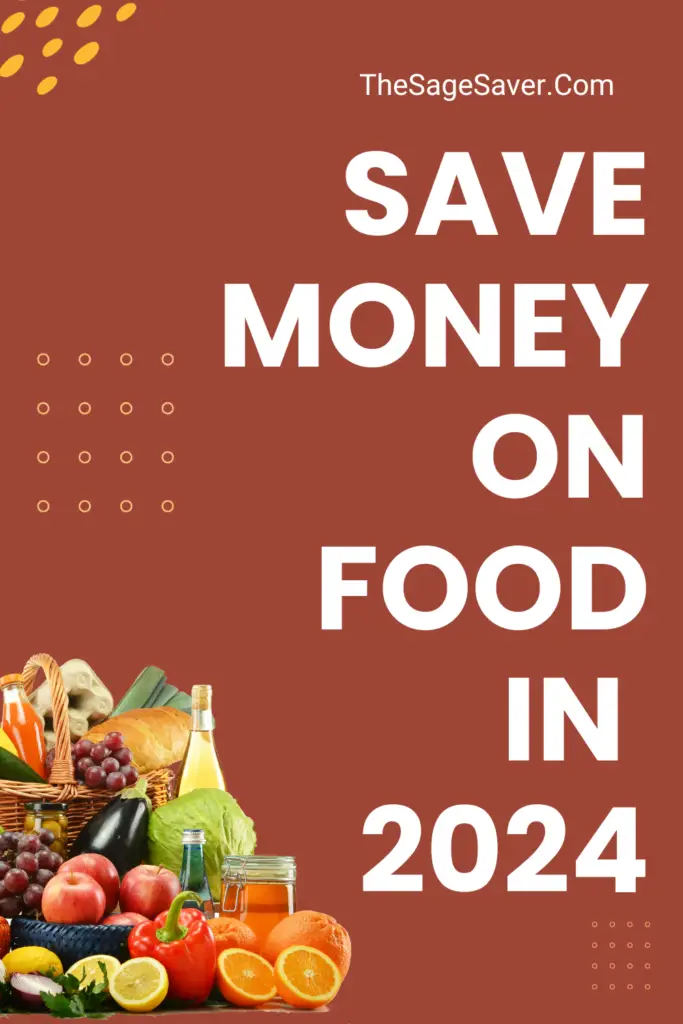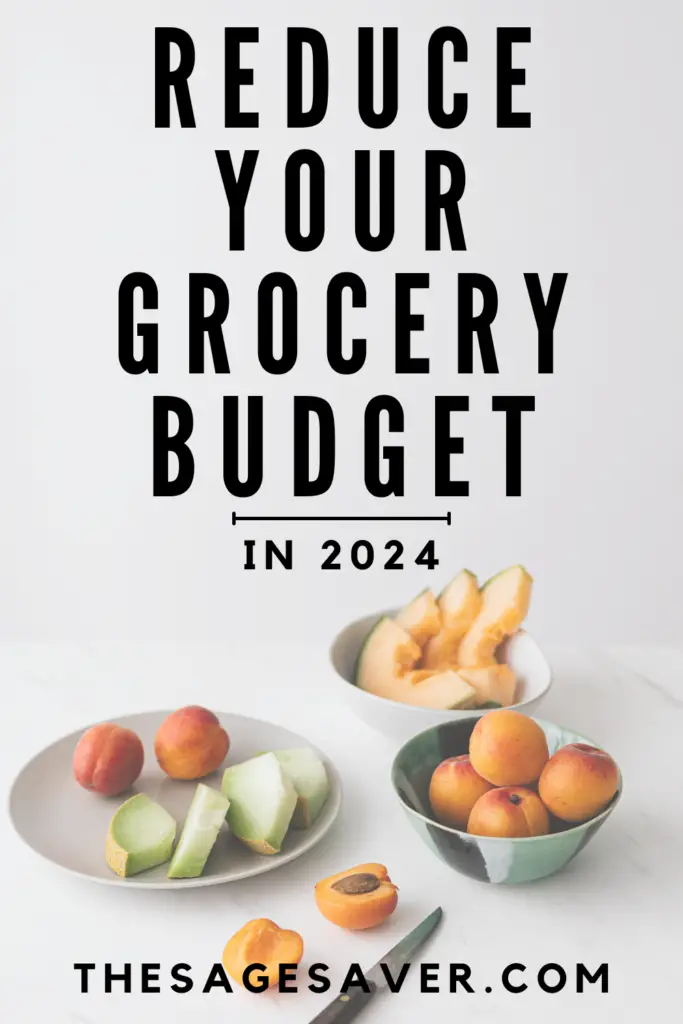How to Keep Your Grocery Spending Under Control in 2024
Aside from your mortgage, your biggest monthly expense is likely groceries. And unlike your mortgage, your car payment, and most of the rest of your bills; you actually have some control over your grocery spending, even it doesn’t feel that way.

This post may contain affiliate links. This means I earn a small commission at no additional cost to you.
What is a realistic grocery budget for a family?
According to the USDA, a thrifty food budget for a family of four in October of 2023, was $225.10 a week. This is assuming you are cooking all your meals and snacks at home. However; my family of 6 has made $200 a week work for all of 2023. We don’t eat all organic or any other specific diets, but we do cook from scratch quite a bit and make sure to eat fresh fruits and vegetables. Location may also play a role, as we live in the Midwest, which tends to have more reasonable food prices. We also use all the tips I am sharing down below.
Make A Grocery Budget
If you don’t have a grocery budget, start by tracking how much you’re spending on groceries for a few weeks. From there, come up with a weekly or monthly budget. Allot that money for groceries and whatever you do don’t go over. Use grocery pick up to avoid impulse purchases. If you shop in store, use a calculator and cash to avoid busting your budget.
Next, try cutting back your budget by $20 per month. Keep going and see how low you can go. The remaining tips will help you do that without feeling like you’re depriving yourself.
Keep A Price Book
Who doesn’t love a bargain or a good deal? They are all over the store, but do you know if what they advertise as a good deal is actually saving you money? Keep a little notebook in your purse or keep a text document on your phone with the regular prices of the items you buy most often. Not only can you see if that “deal” really is a deal, you can also determine what kitchen staple is cheapest where and adjust your shopping accordingly. Your price book will also come in handy when you browse through weekly grocery flyers. You can decide if a loss leader deal is worth driving to the store long before you ever set a foot out the door.
Meal Plan Using A Few Frugal Dishes
Making a meal plan is essential. You don’t have to make drastic changes and eat nothing but rice and beans all week. Instead, think of a few inexpensive dishes your family enjoys. That may be rice and beans. Or how about a big pot of soup or chili. Often meatless dishes will be your best frugal bet or use meat in small portions on frugal dish days. Enjoying frugal meals even just a handful of days during the month combined with using up any and all leftovers will make a big difference in your grocery budget.
Cut Out The Extras
Make a list before you head to the store and stick to it. All those little extras like the fancy bread from the bakery or the candy you grabbed at checkout start to add up. Get in the habit of skipping those extras unless there’s a good reason to buy them. Stick to your list and you’ll cut your grocery spending by quite a bit each week. It’s amazing how all those little extras add up.
Consider Multiple Stores
I get it, as a busy homeschooling mama to four, going to multiple stores can be quite a drag. Luckily, we live in a unique time of grocery pick up. Use an app like Flipp, which allows you to see all the store sales ads at once. If you are able to shop at multiple stores, consider doing that. I usually always get a Kroger pick up for their loss leaders. These items are usually meat, cheese, fruit, veggies, etc. The rest of my list, I will get using a Walmart pick up order. The distance from my house to both stores is less than 10 minutes, so it doesn’t really cost more gas money and I don’t spend a lot of extra time shopping or picking up. If this isn’t doable in your current season, no worries. Maybe just do this periodically to stock up your pantry, which can also help grocery spending.
Use Store Loyalty Programs and Coupons
Not every store has a loyalty program and/or coupons, but several do. Yes, they do track what you’re buying, but they tend to tailor coupons toward you specifically because they know it will bring you in and they’re hoping you’ll spend more. You’ll obviously want to avoid that last part. These can be a great way to save money, as you can just go on the app and clip a coupon. No more searching or cutting out coupons. I do this once a week when I make my meal plan and it takes about 15 minutes to go through the ad, coupons, and make my grocery pick up order.
Use Cashback Apps
A lot of people scoff at cashback apps. They give very little pay out and it takes time to accumulate a decent amount. However; just scanning a receipt takes literal seconds and the savings add up. I use three apps consistently: Fetch, iBotta, and Receipt Hog. All of these apps have a decent amount by the end of the year and I generally use the payout on Amazon, Walmart, or Target gift cards for the holidays.
Give these tips a try and see if you don’t start to see big savings on a weekly basis. What you do with all the extra money each month is up to you. Save up for a fun summer vacation, pay off those credit cards, or start building your financial safety net.






